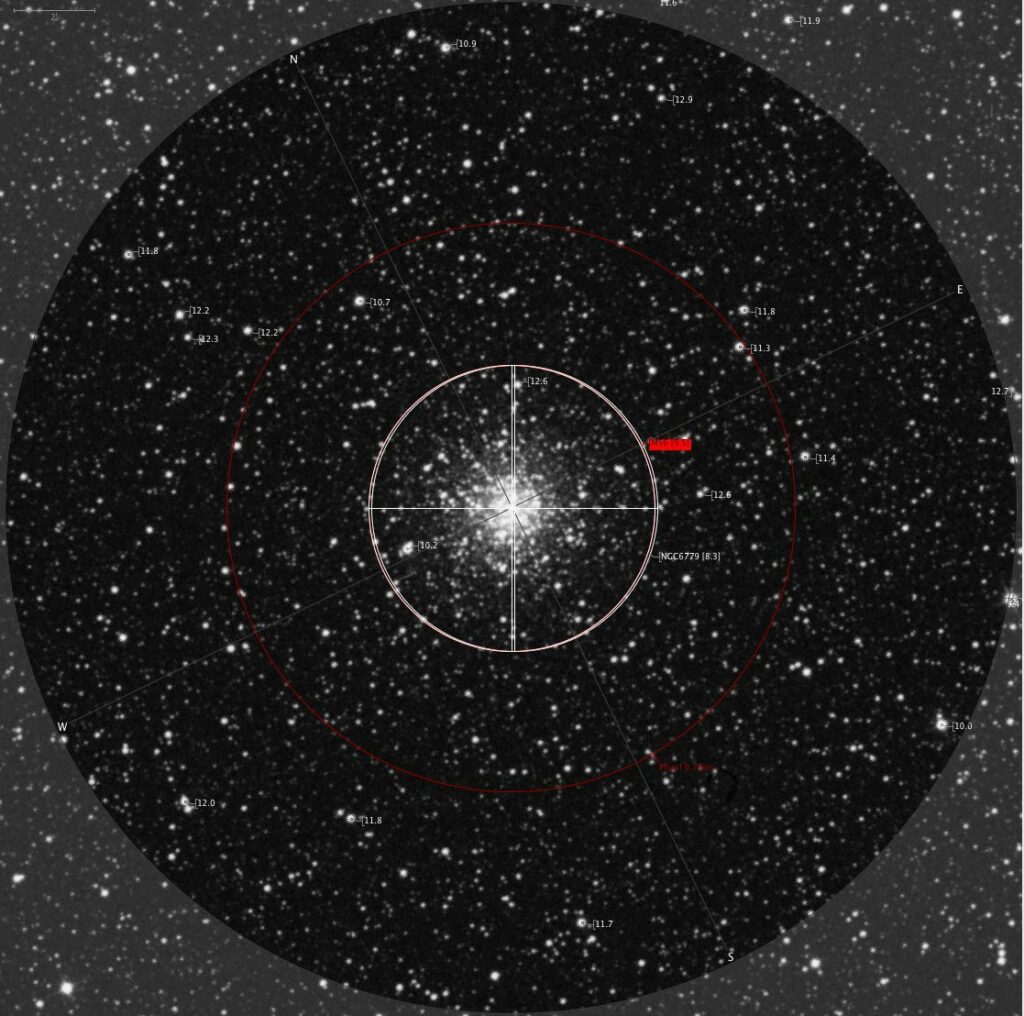
Well my weather forecast widget indicated there would be clear skies by 21:00 U.T last night and indeed there was. The transparency indicator suggested conditions weren’t going to be ideal though.
Rather than just choosing an unobserved object at random, I used Astroplanner to sort by unobserved objects, their highest transit time, and the lowest air mass I could observe them through. The first of these on the list was M14, but this was buried in the murk, so I chose M56, the Globular Cluster in Lyra.
My notes for the evening read.
Another promising start marred by the arrival of very thin high cloud as soon as darkness had fallen. Started the observing session with M14, but object completely obscured by cloud. So move onto next selected object M56.
30 mins into session and sky clears. No Moon and sky black towards the Zenith. A slight breeze coming from the North but observatory shelters scope.
21:05 Suspect ISS pass. Checking on this with GoSatWatch on the iPad later confirms ISS pass at 21:06 UT – so the system works 🙂 It’s a pity my PC clock is a few minutes out though.
M56 Small Globular Cluster. Very difficulty to resolve components clearly except by averted vision. With the Altair Astro 250mm, Plossl 9.7mm, 209 X, 14′ the cluster looks to have a flattened ovoid appearance running roughly North/South thinning at the ends. This is only fleetingly seen with averted vision also. Really quite difficult to quantify the apparent size of object, but guess at about a 1/4 of the 9.7mm eyepiece FOV. This equates to about 7′, which is surprisingly about right.
After the session I read up on M56. Stephen James O’Meara’s ‘The Messier Objects’ describes an almost identically oriented observation.
‘Moderate power starts to resolve the cluster, which immediately appears elongated North-South’
While I wasn’t able to make out the thin fan to the South, I was pleased to have at least made a similar observation as the great observer.
All in all a very satisfying hours session, and another object ticked off the Messier List.